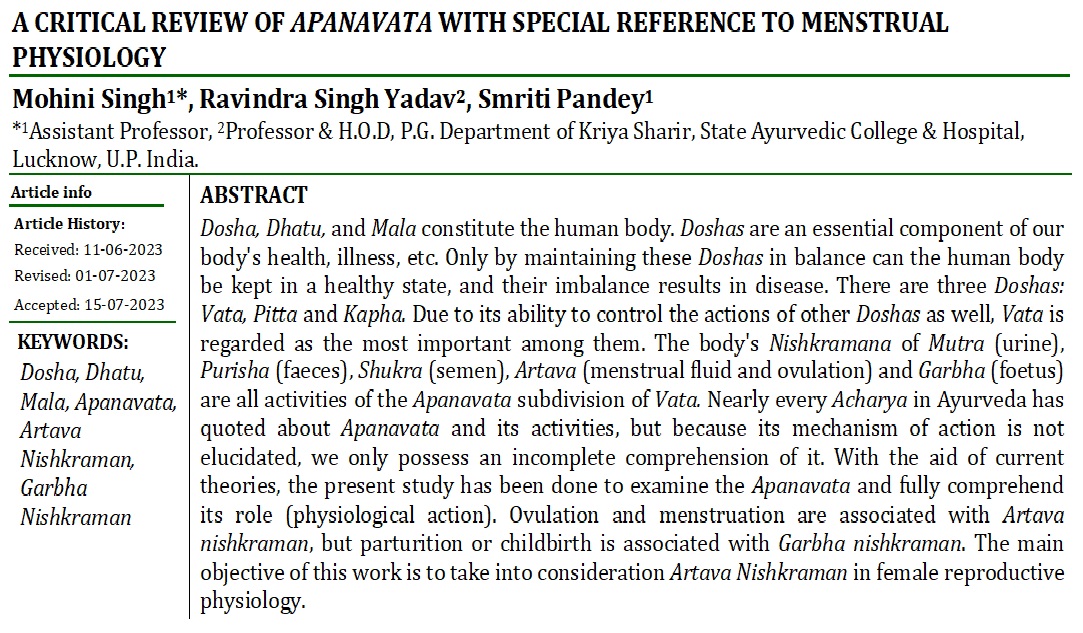A Critical Review of Apanavata with special reference to Menstrual Physiology
DOI:
https://doi.org/10.47070/ijapr.v11i7.2827Keywords:
Dosha, Dhatu, Mala, Apanavata, Artava Nishkraman, Garbha NishkramanAbstract
Dosha, Dhatu, and Mala constitute the human body. Doshas are an essential component of our body's health, illness, etc. Only by maintaining these Doshas in balance can the human body be kept in a healthy state, and their imbalance results in disease. There are three Doshas: Vata, Pitta and Kapha. Due to its ability to control the actions of other Doshas as well, Vata is regarded as the most important among them. The body's Nishkramana of Mutra (urine), Purisha (faeces), Shukra (semen), Artava (menstrual fluid and ovulation) and Garbha (foetus) are all activities of the Apanavata subdivision of Vata. Nearly every Acharya in Ayurveda has quoted about Apanavata and its activities, but because its mechanism of action is not elucidated, we only possess an incomplete comprehension of it. With the aid of current theories, the present study has been done to examine the Apanavata and fully comprehend its role (physiological action). Ovulation and menstruation are associated with Artava nishkraman, but parturition or childbirth is associated with Garbha nishkraman. The main objective of this work is to take into consideration Artava Nishkraman in female reproductive physiology.
Downloads



